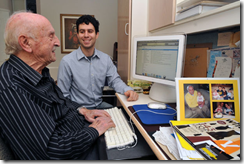 It was really encouraging to see the turnout at the recent Thousand Oaks Council on Aging program about the Village Movement.
It was really encouraging to see the turnout at the recent Thousand Oaks Council on Aging program about the Village Movement.
Too frequently I meet seniors, young and old, who mentally live in “Never Never Land”—where they’ll never get old and they’ll never need help.
So when a large group of seniors seem interested in a concept that, at its foundation, suggests we take responsibility and develop a plan for our future, it’s encouraging.
No government or social service program will ever be able to meet the needs of the age wave that began just last year. Over the next 20 years our senior population will double and our 85-plus population will grow fourfold.
It’s these statistics that motivated Senior Concerns and the Council on Aging to take the lead in exploring the village concept in our community.
According to the Village to Village Network, “Villages are self-governing, grassroots, community-based organizations developed with the sole purpose of enabling people to remain in their homes and communities as they age.”
These virtual communities provide a mix of transportation, home maintenance, social and healthcare services to their members.
There are more than 60 such villages operating in the United States today. Creating a new one involves five initial steps:
Establish your founding fathers (and mothers). Most villages begin with a core group of five to eight volunteers who are passionate about the project. They have a shared vision of what a village could offer and how it might benefit themselves and their neighbors.
The founding team should include a mix of skills—business management, community leadership, fundraising and membership development are good skills to include. The core team does a lot of the early work in scoping out the project.
Find a champion. Being affiliated with an area institution can help jump-start a village. A champion may come in the form of a medical facility, a college, a community nonprofit or an organization that works with seniors.
Establishing a relationship with a nonprofit can save the village from creating its own nonprofit structure. A trusted nonprofit partner may provide community credibility as well as access to many valuable resources and services.
Determine community needs. Each village should develop a solid understanding of the needs in the community, especially needs that are currently unmet. Examples of unmet needs are free door-to-door transportation, affordable dementia care and trusted service providers with reduced fees. A needs assessment survey may be used to collect this information.
Define the service area. Selecting too large a geographical area may make it difficult to find volunteers to provide necessary services. For example, a senior in Ojai needs a ride to the doctor, but the available volunteer lives in Thousand Oaks. Today’s villages suggest starting small and branching out over time into new geographies or “pods.”
Define strategic partners. While a champion takes the lead, strategic partners are added as the village defines its service offerings. Hospitals, large medical providers, nursing schools, gerontology programs, senior service providers, retirement communities, retail businesses and city government are but a few of the strategic partners that can help make a village a reality.
To paraphrase Confucius, every journey begins with one step. If these steps produce positive results, there is much more to do.
Senior Concerns will host “A Village: The First Step” from 5:30 to 7 p.m. Tues., April 24 for community members who are interested in becoming founders of a village. The meeting will be at Senior Concerns, 401 Hodencamp Road, Thousand Oaks. RSVP to Dana at (805) 497-0189.
More ...
Tags: Village,Thousand Oaks Council on Aging,Senior Concerns